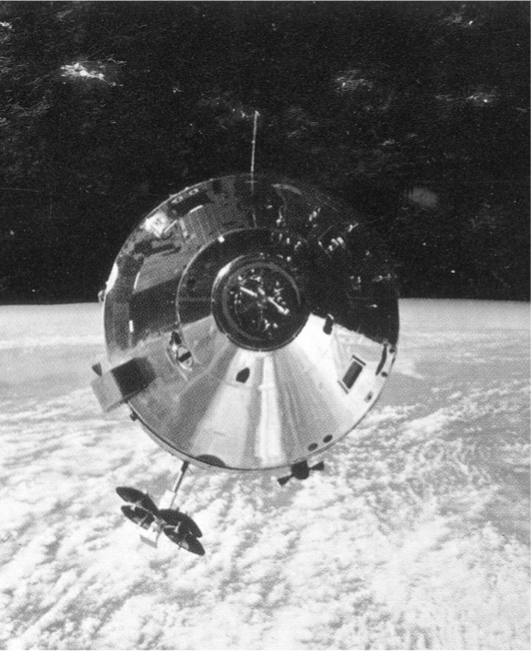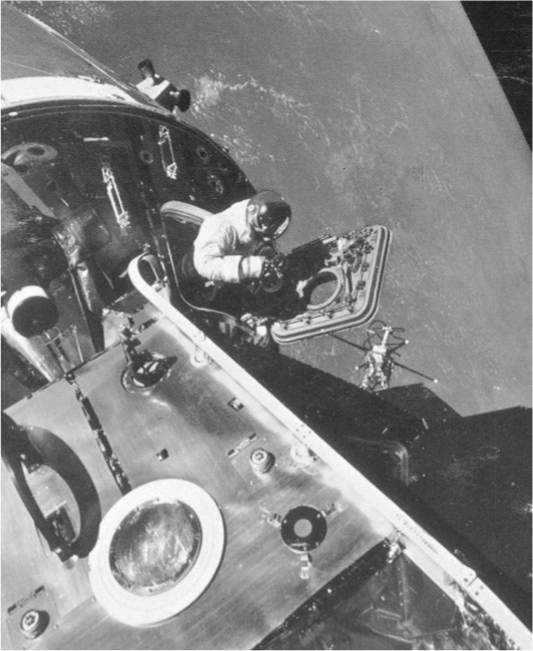On 6 January 1969, three astronauts were called in to Mission Control at Houston — Neil Armstrong, Buzz Aldrin and Michael Collins. They were told that if Apollo 9 and Apollo 10 were successful, they would crew Apollo 11 — the first manned spacecraft to land on the Moon.
Apollos 9 and 10 would be rehearsals for the real thing. Apollo 9 would test the giant Saturn V rocket that would be used to carry both the command module and the lunar module for an upcoming moon- landing mission — the first rehearsal.
Honeysuckle Creek would track the Apollo 9 command module and Tidbinbilla Tracking Station would track the lunar module.
Both spacecraft in Earth’s orbit would pass over each station at high speed. This posed a problem for the Tidbinbilla antenna as it was built for tracking slow-moving spacecraft at lunar distances and into deep space, not fast-moving spacecraft just above them. We had a problem at Honeysuckle Creek too — our antenna couldn’t track both spacecraft at the same time.
Or could we? The teams at Honeysuckle Creek and Tidbinbilla were not frightened of finding an unconventional solution! And we did manage it, with some very clever procedures. The antennas of both tracking stations did things they were never designed to do!
Apollo 9 splashed down on 13 March — we celebrated again with a ‘splashdown dinner’.
Now for Apollo 10 — the final rehearsal.
By now Apollo missions were becoming more complex, as was the flow of data. I realised that we needed local computer software to simulate the spacecraft’s digital command functions.

Apollo 9 command and service modules as seen from the lunar module.
NASA

CSM/LM docked; astronaut performs stand-up extra-vehicular activity.
NASA
I worked out a software package called ASTRO, and another called SABRE and was invited to the United States to talk about them at the Goddard Space Flight Center and attend a course on Apollo software for the station’s UNIVAC computers.
We did our Apollo 10 mission simulation exercises, with the NASA aircraft again pretending to be the spacecraft. This time we tested a new Apollo video camera and its remote controls. I used my SABRE software to simulate camera commands coming in from Mission Control. It all worked perfectly and as a grand finale I manoeuvred the video camera in the aircraft to focus on the Playboy pin-up hanging on the cabin flightdeck door. Everybody applauded!
The Apollo 10 launch date drew closer. We checked and rechecked everything, as we did for every mission. New equipment had to be installed or modified before the worldwide network went on to ‘mission status’ about three weeks before the launch.
(‘Mission status’ meant a complete equipment configuration freeze. We were not allowed to change anything now without authorisation from NASA.)
During the final week we were rostered to work around the clock. All the data streams — voice, engineering telemetry, ranging, biomedical and the TV video which flowed in from tracking stations via the NASA Communication Network (NASCOM) hub at the Goddard Space Flight Center and then through to Mission Control in Houston — and the data formats were checked, rechecked and checked again.
One evening during testing the cleaner accidentally bumped the mop handle against a ‘button’ on a rack of electronic equipment in the telemetry area. We all scrambled to investigate the sudden loss of data while Mission Control demanded to know what had happened! That was the only accident. All the stations in the tracking network gave their final reports at ‘T-minus one hour’ — an hour before the spacecraft was due to be launched. (T-minus refers to the number of hours, minutes and seconds to lift-off. After launch, the time is then measured as T-plus.)
The final hour was crucial — a major problem at any of the tracking stations might have meant that the launch would be postponed or even stopped.
There were no problems with Apollo 10 — although we had to tilt our huge antenna dish right over in the middle of tracking to empty snow out of the dish.
It was time for the real thing. Humans were headed for the Moon!
A solar eclipse — or eclipse of the Sun — is when the Moon comes between Earth and the Sun, blocking out the sunlight. Of course, the Moon is much smaller than the Sun, but appears as big to us because it is so much closer to Earth. If you hold your hand in front of your eyes it will block out just about everything in your line of sight, but if you hold it at arm’s length it will only stop you from seeing a small area. As the Moon can only shadow a small area of Earth at a time, a total solar eclipse can only be seen from a strip of Earth surface about 100 kilometres wide and several thousand kilometres long.

When the Sun is on one side of Earth, and the Moon on the other (that is, Earth is directly between the Sun and the Moon), Earth’s shadow crosses the Moon, creating a lunar eclipse. This only happens close to full moon and when the full moon is at the right part of its tilted orbit. (The Moon’s orbit is tilted about five degrees from the plane of the ecliptic — the plane of Earth’s orbit about the Sun.)
A lunar eclipse can be seen wherever the full Moon is above the horizon. The Moon isn’t blackened out, as the Sun is during a solar eclipse — it turns a deep red, becoming a so-called ‘blood moon’, because the sunlight bends and reddens as it passes through Earth’s atmosphere.